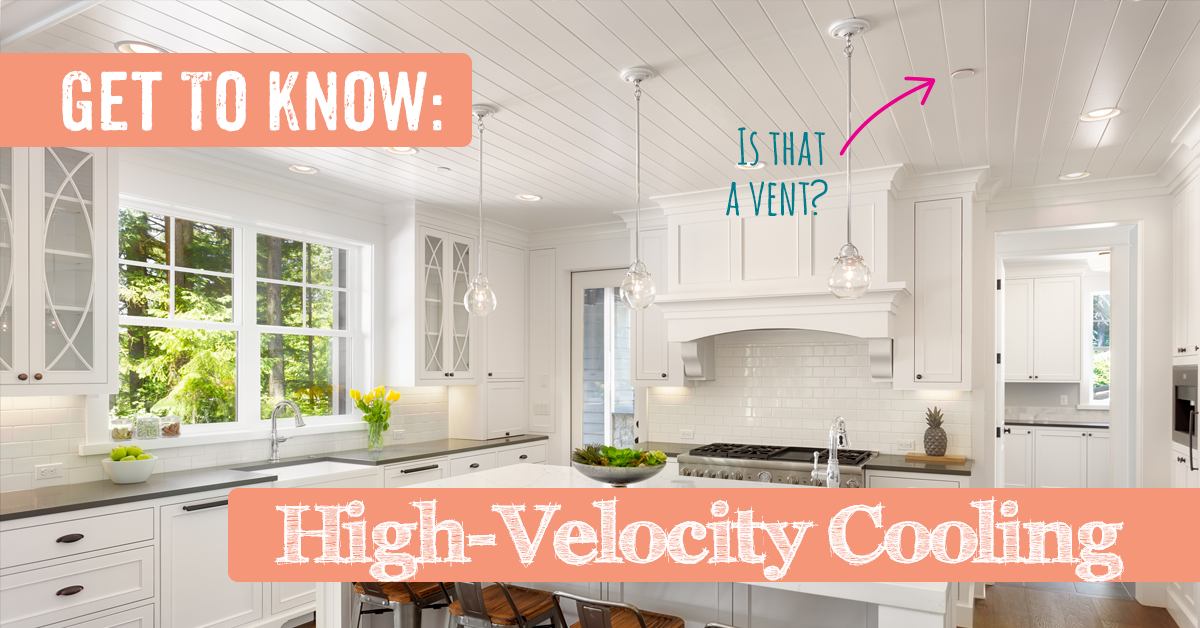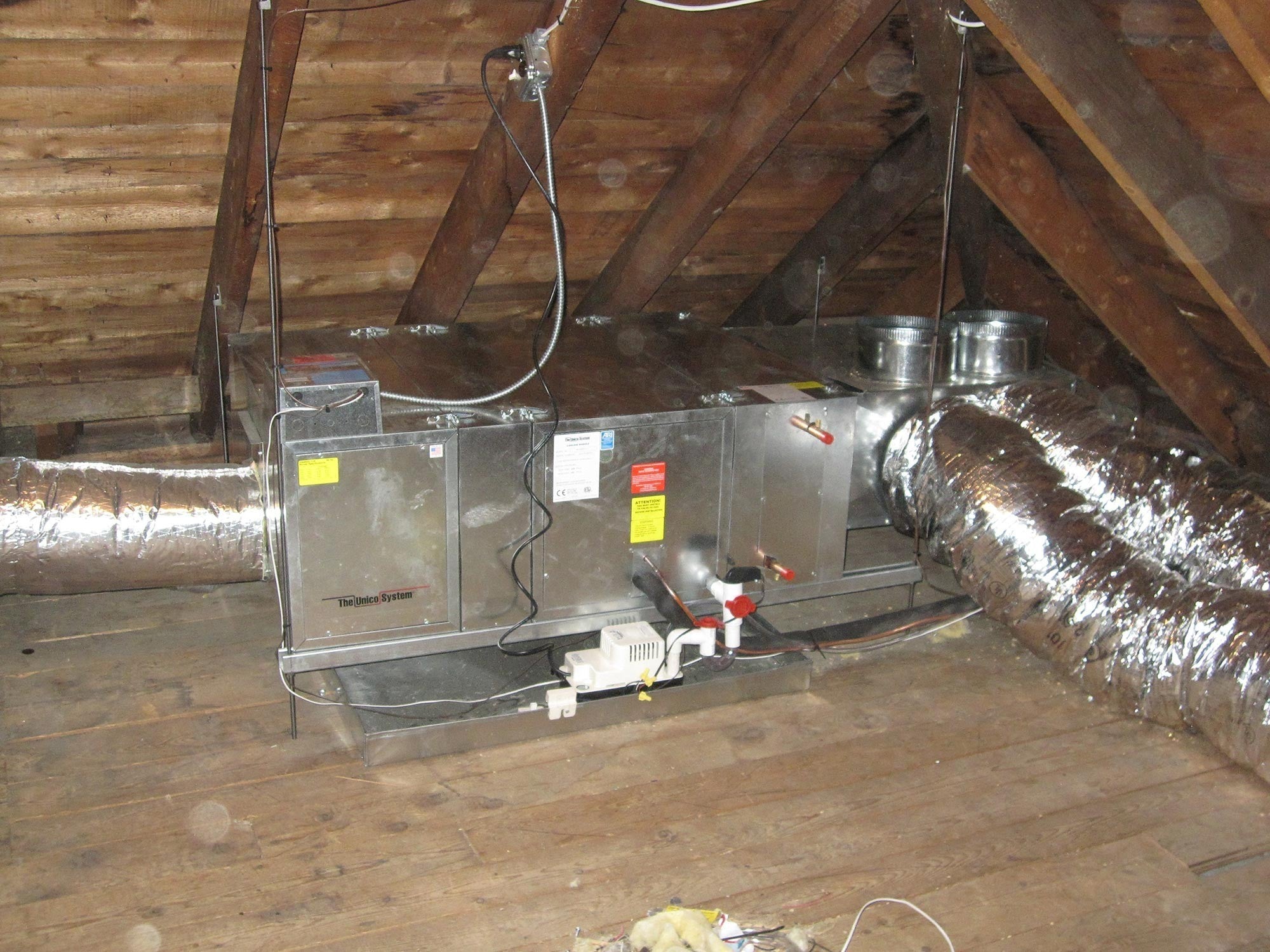
Get to Know High Velocity Cooling
When it comes to cooling your home, the three options that we hear about all the time are the traditional forced air system with ductwork, mini-split systems, and in-window air conditioning units. These options can all cool your home, although traditional and mini-split systems cool much more efficiently than window units. But there is a fourth option that we don’t hear about as often that offers a great solution for certain homes: high-velocity air conditioning.
High-velocity cooling works a little differently than a traditional air conditioning system. With conventional systems, diffusion is used for cooling – that is, your air conditioner pumps cold air into the room at certain times, and a return vent in each room sucks air back to the cooling unit for additional cooling. High-velocity systems use aspiration – the air is forced through much smaller tubes and vents at a greater velocity in a more continuous manner. This flow creates a continued current of air throughout your home, which keeps things cool. In a high-velocity system, you will need only one return vent for the entire home.
Why would a high-velocity system be a better cooling choice for some homes?
Pro: Great for Retrofitting
For some homes, especially older houses built before the creation of modern air conditioning, forced air systems with ductwork pose some problems. Ductwork can be bulky and difficult to hide, leaving an eyesore in some homes. Plus, there is the cost of installing all that ductwork. Mini-split systems offer an alternative option, but the indoor component of a mini-split can still spoil the look of a room.
High-velocity air conditioning is a fantastic alternative. The pipes used to transfer the air throughout the home are only about two inches in diameter, making them easy to hide. The vents are flat, and about the size of a DVD, so when installed they are flush with the surface. The vents aren’t always required to be on a wall, either – these systems allow for installation on ceilings, on floors…even under kitchen cabinets!
Installation of the cooling unit is usually in the attic, but even this location is flexible. This system is truly one of the best out there when it comes to working around the limitations of older homes.
Pro: Minimally Invasive
Because the “ducts” of high-velocity systems are so small, it is much easier to install them in a way that goes unnoticed to family members and household visitors. There are no large, unsightly vents, just small vents that are set flush with the wall (ceiling, floor, or baseboard). Each vent is about the size of a DVD, and almost as thin!
The cooling unit itself is also minimally invasive, in that it is contained inside the house. There is no unsightly bulky outdoor unit to worry about, which is especially helpful for homes with a lot of yard debris that can cause clogging.
Pro: Reduces Humidity Very Efficiently
While high-velocity systems do require a little more energy to run, they use that energy extremely efficiently. One of the best parts of owning this type of system is the decrease in home humidity. Fighting against humidity can be a constant struggle for traditional air conditioners, but high-velocity systems have no trouble reducing moisture in the air. That drop in humidity means the thermostat can be set at a higher temperature – 72° F in dry are can feel closer to a temperature in the upper 60s.
Not only does the dry air allow for higher temperatures, but it also reduces many air quality issues. Dust mites hate dry air, as does mold and mildew. Reducing the chances of these invaders means you end up not only with comfort but with a healthier environment.
Con: May be a Bit Too Breezy
Unlike traditional air conditioning systems that start and stop, high-velocity cooling requires a constant air stream to maintain home temperatures. That means the air in the home is constantly in motion. For some people this constant motion is soothing, but for others it’s annoying.
Before opting for a high-velocity system, ask yourself (and your family members) whether or not this air motion will be uncomfortable over the long run. If you can’t deal with a breeze in your home, it’s time to consider another cooling option.
Con: It’s Noticeable
High-velocity air conditioners may visually fade into the background, but that doesn’t mean you will never notice their existence. Besides producing a constant breeze, the high-velocity movement of the air through the pipes is audible. It sounds like wind. Advancements in the materials and insulation used around the pipes have dampened the sound a bit, but know there is some noise that comes along with this system.
If you demand complete silence in your home or are already bothered by the sound of traditional air conditioning systems, then high-velocity cooling may not be for you.
Con: Initial Installation Can Be Expensive
The big drawback for most homeowners is the initial cost of installation. High-velocity systems tend to be more costly to install, but for many customers, the benefits of hidden ducts and vents are worth the higher investment. Plus, because the system uses energy so efficiently, there is the potential for long-term savings on utility bills.
In the end, your choice just depends on your home environment and what you need from a cooling system. High-velocity cooling is even gaining popularity with those building new homes due to its non-invasive nature.
Source: https://www.brownheatingandcooling.com/get-know-high-velocity-cooling/


